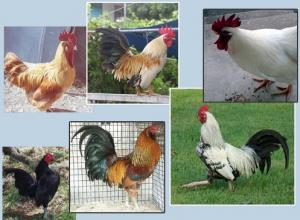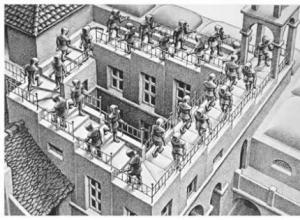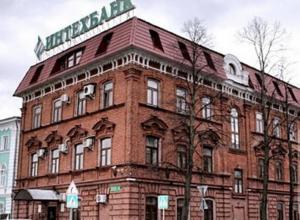What are called isomers. The concept of isomerism. Position isomerism
Isomers, isomerism
Isomers- these are substances that have the same qualitative and quantitative composition, but different structures and, therefore, different properties
The phenomenon of the existence of isomers is called isomerism
For example, a substance with the composition C 4 H 10 has two isomeric compounds.
The physical properties of butane and isobutane are different: isobutane has lower melting and boiling points than n.butane.
Ball-and-stick model of the butane molecule Ball-and-stick model of the isobutane molecule
The chemical properties of these isomers differ slightly, because they have the same qualitative composition and the nature of the bonds between the atoms in the molecule.
Another definition of isomers can be given as follows:
Isomers – substances that have the same molecular but different structural formulas.
Types of isomerism
Depending on the nature of the differences in the structure of the isomers, there are structural And spatial isomerism.
Structural isomers- compounds of the same qualitative and quantitative composition, differing in the order of bonding of atoms, i.e. chemical structure.
|
Structural isomerism is divided into: |
||
|
1.Isomerism of the carbon skeleton |
2.Positional isomerism (multiple bond, functional group, substituent) |
3.Interclass isomerism CH 3 -CH 2 -NO 2 nitroethane HOOC-CH 2 -NH 2 aminoacetic acid (glycine) |
|
Position isomerism |
||
|
multiple connection CH 2 = CH-CH = CH 2 CH 3 -CH= C= CH 2 |
functional group CH 3 -CHON -CH 3 CH 2 OH -CH 2 -CH 3 |
Deputy CH 3 -CHCI -CH 3 CH 2 CI -CH 2 -CH 3 |
Structural isomerism
|
|
Isomerism of the position of a multiple (double) bond: Butene-1 and butene-2 |
|
Carbon skeleton isomerism: Cyclobutane and methylcyclopropane |
|
|
Interclass isomerism: Butene and cyclobutane |
Spatial isomers (stereoisomers) with the same composition and the same chemical structure, they differ in the spatial arrangement of atoms in the molecule
|
Spatial isomerism is divided into: |
|
|
|
Characteristic of substances containing double bonds or cyclic ones. |
Optical isomers are also called mirror or chiral (like left and right hand)
And grape acid, after the study of which J. Berzelius introduced the term ISOMERIA and suggested that the differences arise from "the different distribution of simple atoms in a complex atom" (i.e., a molecule). Isomerism received a true explanation only in the 2nd half of the 19th century. based on the theory of chemical structure of A. M. Butlerov (structural isomerism) and the stereochemical theory of J. G. Van’t Hoff (spatial isomerism).
Structural isomerism
Structural isomerism is the result of differences in chemical structure. This type includes:
Isomerism of the hydrocarbon chain (carbon skeleton)
Isomerism of the carbon skeleton, due to the different order of bonding of carbon atoms. The simplest example is butane CH 3 -CH 2 -CH 2 -CH 3 and isobutane (CH 3) 3 CH. Dr. examples: anthracene and phenanthrene (formulas I and II, respectively), cyclobutane and methylcyclopropane (III and IV).
Valence isomerism

Valence isomerism (a special type of structural isomerism), in which isomers can be converted into each other only through the redistribution of bonds. For example, the valence isomers of benzene (V) are bicyclohexa-2,5-diene (VI, “Dewar benzene”), prismane (VII, “Ladenburg benzene”), and benzvalene (VIII).
Functional group isomerism
It differs in the nature of the functional group. Example: Ethanol (CH 3 -CH 2 -OH) and Dimethyl ether (CH 3 -O-CH 3)
Position isomerism
A type of structural isomerism characterized by differences in the positions of identical functional groups or double bonds on the same carbon skeleton. Example: 2-chlorobutanoic acid and 4-chlorobutanoic acid.
Spatial isomerism (stereoisomerism)
Enantiomerism (optical isomerism)
Spatial isomerism (stereoisomerism) occurs as a result of differences in the spatial configuration of molecules having the same chemical structure. This type of isomers is divided into enantiomerism(optical isomerism) and diastereomerism.
Enantiomers (optical isomers, mirror isomers) are pairs of optical antipodes of substances characterized by opposite sign and identical rotations of the plane of polarization of light with the identity of all other physical and chemical properties (except for reactions with other optically active substances and physical properties in a chiral environment ). A necessary and sufficient reason for the appearance of optical antipodes is the assignment of the molecule to one of the following point groups of symmetry C n, D n, T, O, I (Chirality). Most often we are talking about an asymmetric carbon atom, that is, an atom connected to four different substituents, for example:
Other atoms can also be asymmetric, for example, atoms of silicon, nitrogen, phosphorus, and sulfur. The presence of an asymmetric atom is not the only reason for enantiomerism. Thus, the derivatives of adamantane (IX), ferrocene (X), 1,3-diphenylallene (XI), and 6,6"-dinitro-2,2"-diphenic acid (XII) have optical antipodes. The reason for the optical activity of the latter compound is atropoisomerism, that is, spatial isomerism caused by the absence of rotation around a simple bond. Enantiomerism also appears in helical conformations of proteins, nucleic acids, and hexagelicene (XIII).

(R)-, (S)- nomenclature of optical isomers (naming rule)
The four groups attached to the asymmetric carbon atom C abcd are assigned different precedence, corresponding to the sequence: a>b>c>d. In the simplest case, precedence is established by the serial number of the atom attached to the asymmetric carbon atom: Br(35), Cl(17), S(16), O(8), N(7), C(6), H(1) .
For example, in bromochloroacetic acid:

The seniority of substituents at the asymmetric carbon atom is as follows: Br(a), Cl(b), C group COOH (c), H(d).
In butanol-2, oxygen is the senior substituent (a), hydrogen is the junior substituent (d):

It is necessary to resolve the issue of the substituents CH 3 and CH 2 CH 3 . In this case, seniority is determined by the atomic number or numbers of other atoms in the group. The primacy remains with the ethyl group, since in it the first C atom is connected to another C(6) atom and to other H(1) atoms, while in the methyl group the carbon is connected to three H atoms with serial number 1. In more complex cases They continue to compare all the atoms until they reach atoms with different serial numbers. If there are double or triple bonds, then the atoms located at them are counted as two and three atoms, respectively. Thus, the -COH group is considered as C (O, O, H), and the -COOH group is considered as C (O, O, OH); The carboxyl group is older than the aldehyde group because it contains three atoms with atomic number 8.
In D-glyceraldehyde, the eldest group is OH(a), followed by CHO(b), CH 2 OH(c) and H(d):

The next step is to determine whether the group arrangement is right-handed, R (lat. rectus), or left-handed, S (lat. sinister). Moving on to the corresponding model, it is oriented so that the minor group (d) in the perspective formula is at the bottom, and then viewed from above along the axis passing through the shaded face of the tetrahedron and group (d). In D-glyceraldehyde group
are located in the direction of right rotation, and therefore it has an R-configuration:

(R)-glyceraldehyde
In contrast to the D,L nomenclature, the designations of (R)- and (S)-isomers are enclosed in brackets.
Diastereomerism
σ-diastereomerism
Any combination of spatial isomers that does not form a pair of optical antipodes is considered diastereomeric. There are σ and π diastereomers. σ-diasteriomers differ from each other in the configuration of some of the chiral elements they contain. Thus, diasteriomers are (+)-tartaric acid and meso-tartaric acid, D-glucose and D-mannose, for example:

For some types of diastereomerism, special designations have been introduced, for example, threo- and erythro-isomers - this is a diastereomerism with two asymmetric carbon atoms and spaces, the arrangement of substituents on these atoms, reminiscent of the corresponding threose (related substituents are on opposite sides in the Fischer projection formulas) and erythrose ( substituents - on one side):

Erythro-isomers, whose asymmetric atoms are linked to identical substituents, are called meso-forms. They, unlike other σ-diastereomers, are optically inactive due to intramolecular compensation of the contributions to the rotation of the plane of polarization of light from two identical asymmetric centers of opposite configurations. Pairs of diastereomers that differ in the configuration of one of several asymmetric atoms are called epimers, for example:

The term "anomers" refers to a pair of diastereomeric monosaccharides that differ in the configuration of the glycosidic atom in the cyclic form, for example the α-D- and β-D-glucose anomerics.
π-diastereomerism (geometric isomerism)
π-diasteriomers, also called geometric isomers, differ from each other by different spatial arrangements of substituents relative to the plane of the double bond (most often C=C and C=N) or ring. These include, for example, maleic and fumaric acids (formulas XIV and XV, respectively), (E)- and (Z)-benzaldoximes (XVI and XVII), cis- and trans-1,2-dimethylcyclopentanes (XVIII and XIX).

Conformers. Tautomers
The phenomenon is inextricably linked with the temperature conditions of its observation. For example, chlorocyclohexane at room temperature exists in the form of an equilibrium mixture of two conformers - with equatorial and axial orientation of the chlorine atom:

However, at minus 150 °C, an individual a-form can be isolated, which behaves under these conditions as a stable isomer.
On the other hand, compounds that are isomers under normal conditions may turn out to be tautomers in equilibrium when the temperature increases. For example, 1-bromopropane and 2-bromopropane are structural isomers, but when the temperature increases to 250 °C, an equilibrium characteristic of tautomers is established between them.
Isomers that transform into each other at temperatures below room temperature can be considered as non-rigid molecules.
The existence of conformers is sometimes referred to as “rotational isomerism.” Among dienes, there are s-cis and s-trans isomers, which are essentially conformers resulting from rotation around a single (s-single) bond:

Isomerism is also characteristic of coordination compounds. Thus, compounds that differ in the method of coordination of ligands (ionization isomerism) are isomeric, for example, the following are isomeric:
SO 4 - and + Br -
Here, in essence, there is an analogy with the structural isomerism of organic compounds.
Chemical transformations as a result of which structural isomers are converted into each other are called isomerization. Such processes are important in industry. For example, isomerization of normal alkanes into isoalkanes is carried out to increase the octane number of motor fuels; pentane isomerizes to isopentane for subsequent dehydrogenation to isoprene. Isomerization also involves intramolecular rearrangements, of which great importance is, for example, the conversion of cyclohexanone oxime into caprolactam, the raw material for the production of caprone.
The process of interconversion of enantiomers is called racemization: it leads to the disappearance of optical activity as a result of the formation of an equimolar mixture of (-)- and (+)-forms, that is, the racemate. Interconversion of diastereomers leads to the formation of a mixture in which the thermodynamically more stable form predominates. In the case of π-diastereomers, it is usually the trans form. The interconversion of conformational isomers is called conformational equilibrium.
The phenomenon of isomerism greatly contributes to the increase in the number of known (and even more so the number of potentially possible) compounds. Thus, the possible number of structural isomeric decyl alcohols is more than 500 (about 70 of them are known), there are more than 1500 spaces and isomers.
Theory A.M. Butlerov
1. Atoms in molecules are connected to each other in a certain sequence by chemical bonds in accordance with their valence. The order in which atoms bond is called their chemical structure. Carbon in all organic compounds is tetravalent.
2. The properties of substances are determined not only by the qualitative and quantitative composition of molecules, but also by their structure.
3. Atoms or groups of atoms mutually influence each other, which determines the reactivity of the molecule.
4. The structure of molecules can be established based on the study of their chemical properties.
Organic compounds have a number of characteristic features that distinguish them from inorganic ones. Almost all of them (with rare exceptions) are flammable; Most organic compounds do not dissociate into ions, which is due to the nature of covalent bonds in organic substances. The ionic type of bond is realized only in salts of organic acids, for example, CH3COONa.
Homologous series- this is an endless series of organic compounds that have a similar structure and, therefore, similar chemical properties and differ from each other by any number of CH2– groups (homologous difference).

Even before the creation of the theory of structure, substances with the same elemental composition, but with different properties, were known. Such substances were called isomers, and this phenomenon itself was called isomerism.
The basis of isomerism, as shown by A.M. Butlerov, lies the difference in the structure of molecules consisting of the same set of atoms.
Isomerism- this is the phenomenon of the existence of compounds that have the same qualitative and quantitative composition, but different structures and, therefore, different properties.


There are 2 types of isomerism: structural isomerism and spatial isomerism.
Structural isomerism
Structural isomers– compounds of the same qualitative and quantitative composition, differing in the order of bonding of atoms, i.e. chemical structure.

Spatial isomerism
Spatial isomers(stereoisomers) with the same composition and the same chemical structure differ in the spatial arrangement of atoms in the molecule.
Spatial isomers are optical and cis-trans isomers (geometric).
Cis-trans isomerism
lies in the possibility of placing substituents on one or opposite sides of the plane of a double bond or non-aromatic ring. B cis isomers the substituents are on one side of the plane of the ring or double bond, in trans isomers- in different ways.

In the butene-2 molecule CH3–CH=CH–CH3, CH3 groups can be located either on one side of the double bond - in the cis isomer, or on opposite sides - in the trans isomer.
Optical isomerism
Appears when a carbon has four different substituents.
If you swap any two of them, you get another spatial isomer of the same composition. The physicochemical properties of such isomers differ significantly. Compounds of this type are distinguished by their ability to rotate the plane of polarized light transmitted through a solution of such compounds by a certain amount. In this case, one isomer rotates the plane of polarized light in one direction, and its isomer rotates in the opposite direction. Due to such optical effects, this type of isomerism is called optical isomerism. 
Isomers- substances with the same molecular composition, but different chemical structure and properties.
Types of isomerism
I. Structural – lies in the different sequence of connections of atoms in the chain of a molecule:
1) Chain isomerism
It should be noted that the carbon atoms in a branched chain differ in the type of connection with other carbon atoms. Thus, a carbon atom bonded to only one other carbon atom is called primary, with two other carbon atoms – secondary, with three – tertiary, with four – quaternary.
2) Position isomerism
3) Interclass isomerism
4) Tautomerism
Tautomerism(from Greek ταύτίς - the same and μέρος - measure) is the phenomenon of reversible isomerism, in which two or more isomers easily transform into each other. In this case, a tautomeric equilibrium is established, and the substance simultaneously contains molecules of all isomers in a certain ratio. Most often, tautomerization involves the movement of hydrogen atoms from one atom in a molecule to another and back again in the same compound.
Example, tautomeric forms of glucose:
1. Linear form of glucose (aldehyde alcohol)
2. Rearrangement of atoms and transition to cyclic forms of glucose (alha and beta)


II. Spatial (stereo) – due to different positions of atoms or groups relative to a double bond or ring, excluding free rotation of connected carbon atoms
If a carbon atom in a molecule is bonded to four different atoms or atomic groups, for example:
then the existence of two compounds with the same structural formula, but differing in spatial structure, is possible. The molecules of such compounds relate to each other as an object and its mirror image and are spatial isomers.
This type of isomerism is called optical; isomers are called optical isomers or optical antipodes:
Molecules of optical isomers are incompatible in space (like left and right hands); they lack a plane of symmetry.
Thus,
- optical isomers are called spatial isomers, the molecules of which are related to each other as an object and an incompatible mirror image.
Optical isomers of amino acids
3. Conformational isomerism
It should be noted that atoms and groups of atoms connected to each other by a σ bond constantly rotate relative to the bond axis, occupying different positions in space relative to each other.
Latest site materials
Children's creativity

Aramaic language tutorial
The Aramaic script was used to write the text of the language of the same name, which was used for trade transactions in the Middle East from about 1000 BC. e. and before 1000 AD. e. It comes from the Phoenician script. Since evolution from one to another b
Holidays

How do different properties of living things manifest themselves at different levels of organization?
Metabolism. All living organisms have the ability to extract, transform and use energy from the environment, either in the form of nutrients or in the form of solar radiation. They return decomposition products to the external environment and transform
Psychology

Christopher Chabris and Daniel Simons
We all believe that we can see what is in front of us, accurately recall important events from the past, recognize the limits of our knowledge, and correctly determine cause-and-effect relationships. However, these intuitive beliefs are
Why

Decommissioning OS in 1 from 8.3 step by step. Accounting for fixed assets. Other reference books and documents from the section "Fixed assets"
Fixed assets are those assets that are used as labor tools for more than 12 months and cost more than 100,000 rubles. Accounting for fixed assets in 1C 8.3 is 100% automated. First, in 1C Accounting for the operating system, it is drawn up. Further their prin
New Year

The head of “Prosto Moloko” Marat Muratov spoke about the completion of bankruptcy of the agricultural holding “Vamin”
"1C:Enterprise 8" helped the largest agricultural enterprise in Tatarstan "Set Ile" to improve the implementation of the production plan by 30% Specialists of the company "1C: First BIT" (Kazan) completed the implementation of the "1C: Agricultural Accounting" system
Preschoolers

Entering regulatory reference information 1C enterprise 8
/ Inventory accounting Regulatory and reference information: inventory accounting subsystem All regulatory and reference information that is used to display inventory transactions can be divided into two groups: Objects of analytical accounting of inventory transactions
